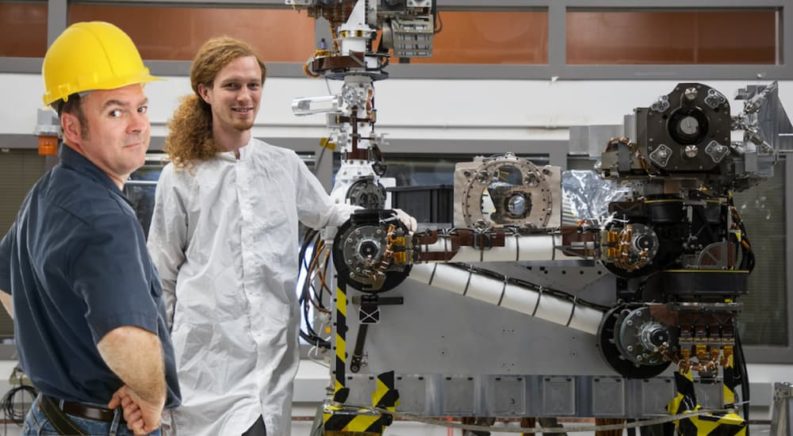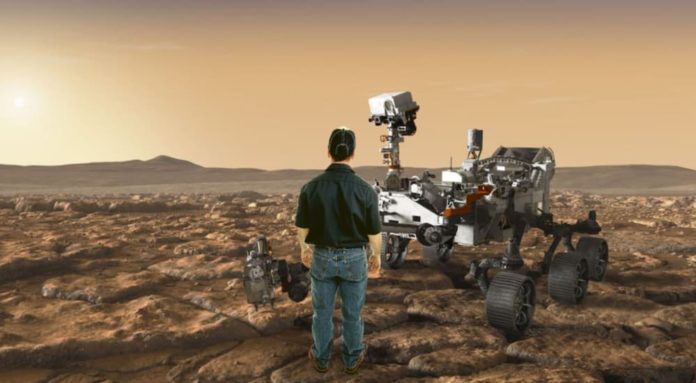Traveling over 300 million miles in six months and landing with pinpoint accuracy, NASA’s Mars rover Perseverance is a marvel of modern engineering. Still, the $2.2 billion dollar vehicle hasn’t impressed everyone.
“It’s alright, I guess,” says local gearhead Tony Warner. “It could really use a racing stripe or something, though.”
A mission over a decade in the making, the Mars 2020 mission was the culmination of the works of thousands of engineers, scientists, and technicians. Tens of thousands of man-hours were poured into the Perseverance, which will explore the Martian surface for signs of ancient life using some of the most sophisticated equipment ever developed, including a laser micro-imager, subsurface radar, and x-ray spectrometer.
“All that and it doesn’t even have tinted windows, that’s all I’m saying,” said Warner.
While NASA engineers concede that the Perseverance lacks tinted windows, they point out that the craft doesn’t actually have windows at all.
“I guess the ‘windows’ of the Perseverance would be the Mastcam-Z, a technical masterwork which is capable of capturing 3D pictures and video at high speed, allowing NASA to examine distant objects to determine their suitability for sampling,” said NASA engineer Rudolph VanMeer.
But despite costing more than the annual GDP of Bhutan, VanMeer could not answer for the conspicuous lack of flair in the rover’s design.
“While our focus is on advancing the cause of human knowledge and exploration, we admit that we could have done a little more design-wise,” says VanMeer. “There was talk of including a sweet chrome grill, but in the end, we couldn’t justify the extra $780,000 in fuel, and focus groups found the design unsatisfactorily ‘bitchin’,” he said.
Criticism hasn’t been limited to the craft’s chassis. Some purists believe that the Perseverance’s lack of a traditional combustion engine could risk putting the brakes on America’s automotive bona fides both at home and intergalactically.
“How are you going to let the other guy know what you’re working with when you can’t open up that exhaust and really let them hear it?” asked local mechanic Jeff Sanborn, who couldn’t tell us exactly who the “them” would be in this scenario.

The mechanic said he was even more unimpressed with the Perseverance upon learning that the average temperature on Mars was -81 degrees. “I mean, throw a Hemi on it for chrissake; it’s not like you have to worry about global warming up there,” Sanborne said.
The rover is outfitted with a unique Multi-Mission Radioisotope Thermoelectric Generator (MMRTG), which uses plutonium to create the 110 watts of electricity necessary to power the vehicle. Sanborne says that while this might be a clever power solution in a scenario where the closest gas station is 152 million miles away, he’s not looking forward to a MMRTG-equipped vehicle rolling into his shop anytime soon.
“It’s hard enough to get under the hood of some of these newer cars. A radiation suit would just make it impossible,” he said. “Plus, you’d never be able to get the grease stains out of it.”
NASA engineer VanMeer offers some hope to the automotive community, hinting that once the Perseverance’s mission is complete, it could link up with previous Mars rovers for the solar system’s first extraterrestrial rally.
“Sure, these rovers were designed for soil sampling, atmospheric testing, and surveying, but that doesn’t mean they can’t rip it up,” the engineer said.
Those expecting some sort of extraterrestrial Talladega shouldn’t hold their breath, though. With top speeds ranging from .087 to .112 miles per hour, it would take the rovers 5,025 hours – roughly 209 days – to complete the average NASCAR race.












